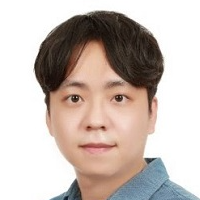Next-Generation Organic Electronics, Transistors, Materials and Their Applications
A special issue of Micromachines (ISSN 2072-666X). This special issue belongs to the section "A:Physics".
Deadline for manuscript submissions: 31 July 2024 | Viewed by 66
Special Issue Editor
Interests: wearable electronics; biomedical application; OLED; organic electronics
Special Issues, Collections and Topics in MDPI journals
Special Issue Information
Dear Colleagues,
As we enter the era of the 4th Industrial Revolution, the demand for technologies that can implement various form factors is increasing to solve the constraints of space and time between objects and people.
In order to implement these various form factors, organic electronics and transistor technology based on next-generation organic materials are needed. Based on this, it is possible to expand into attachable/implantable application fields such as wearable semiconductor, wearable display, wearable healthcare monitoring sensors, wearable electrical and electronic engineering, and optogenetics, which could not be solved with existing inorganic electronic devices.
In order to implement these various organic electronics, research that integrates various fields such as electronics, engineering, chemistry, physics, and materials science is necessary.
To address these challenges, this Special Issue invites high-quality submissions with significant scientific and technical contributions related to key topics in wearable organic electronics, such as:
- Organic/Inorganic Electronics;
- Organic/Inorganic Transistors;
- Next-Generation Semiconductor, Display;
- 2D and Organic Materials for Flexible and Stretchable Electronics;
- Flexible and Wearable Sensor (Touch Sensor, PPG, EEG Sensor, Pulse Oximeter, etc.);
- Attachable/Implantable Devices (Optogenetics, etc.);
- Transparent and Flexible and Stretchable Optoelectronic Devices (OLED, QLED, etc.);
- Element technology for flexible, stretchable and transparent (electrode, encapsulation, etc.).
We are looking forward to receiving your submissions.
Dr. Yongmin Jeon
Guest Editor
Manuscript Submission Information
Manuscripts should be submitted online at www.mdpi.com by registering and logging in to this website. Once you are registered, click here to go to the submission form. Manuscripts can be submitted until the deadline. All submissions that pass pre-check are peer-reviewed. Accepted papers will be published continuously in the journal (as soon as accepted) and will be listed together on the special issue website. Research articles, review articles as well as short communications are invited. For planned papers, a title and short abstract (about 100 words) can be sent to the Editorial Office for announcement on this website.
Submitted manuscripts should not have been published previously, nor be under consideration for publication elsewhere (except conference proceedings papers). All manuscripts are thoroughly refereed through a single-blind peer-review process. A guide for authors and other relevant information for submission of manuscripts is available on the Instructions for Authors page. Micromachines is an international peer-reviewed open access monthly journal published by MDPI.
Please visit the Instructions for Authors page before submitting a manuscript. The Article Processing Charge (APC) for publication in this open access journal is 2600 CHF (Swiss Francs). Submitted papers should be well formatted and use good English. Authors may use MDPI's English editing service prior to publication or during author revisions.
Keywords
- semiconductor/display
- 2D materials
- organic/inorganic electronics
- implantable/attachable/eearable devices
- flexible/stretchable/transparent electronics
- wearable sensors
- optogenetics
- wearable electroceuticals
- OLED/QLED/OPD/PSC
- electrode/transistors/encapsulation
- biomedical application






